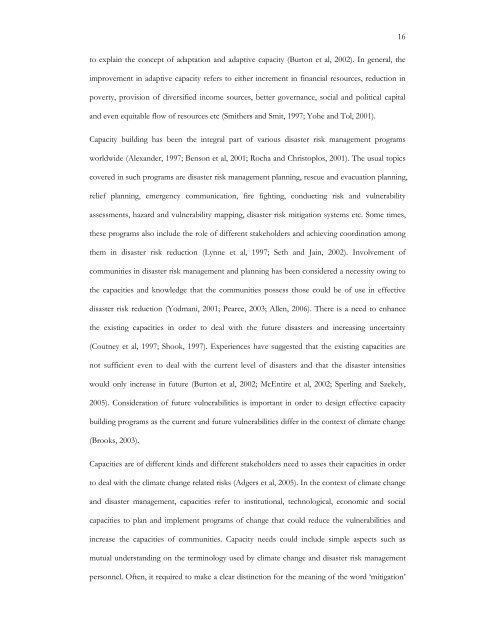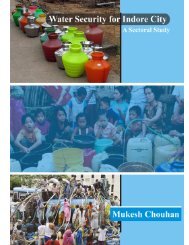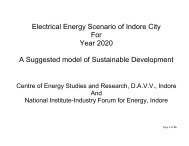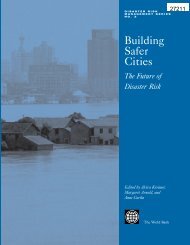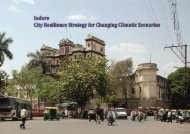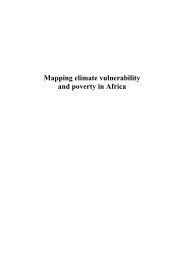Climate Change and Local Level Disaster Risk Reduction Planning ...
Climate Change and Local Level Disaster Risk Reduction Planning ...
Climate Change and Local Level Disaster Risk Reduction Planning ...
You also want an ePaper? Increase the reach of your titles
YUMPU automatically turns print PDFs into web optimized ePapers that Google loves.
to explain the concept of adaptation <strong>and</strong> adaptive capacity (Burton et al, 2002). In general, the<br />
improvement in adaptive capacity refers to either increment in financial resources, reduction in<br />
poverty, provision of diversified income sources, better governance, social <strong>and</strong> political capital<br />
<strong>and</strong> even equitable flow of resources etc (Smithers <strong>and</strong> Smit, 1997; Yohe <strong>and</strong> Tol, 2001).<br />
Capacity building has been the integral part of various disaster risk management programs<br />
worldwide (Alex<strong>and</strong>er, 1997; Benson et al, 2001; Rocha <strong>and</strong> Christoplos, 2001). The usual topics<br />
covered in such programs are disaster risk management planning, rescue <strong>and</strong> evacuation planning,<br />
relief planning, emergency communication, fire fighting, conducting risk <strong>and</strong> vulnerability<br />
assessments, hazard <strong>and</strong> vulnerability mapping, disaster risk mitigation systems etc. Some times,<br />
these programs also include the role of different stakeholders <strong>and</strong> achieving coordination among<br />
them in disaster risk reduction (Lynne et al, 1997; Seth <strong>and</strong> Jain, 2002). Involvement of<br />
communities in disaster risk management <strong>and</strong> planning has been considered a necessity owing to<br />
the capacities <strong>and</strong> knowledge that the communities possess those could be of use in effective<br />
disaster risk reduction (Yodmani, 2001; Pearce, 2003; Allen, 2006). There is a need to enhance<br />
the existing capacities in order to deal with the future disasters <strong>and</strong> increasing uncertainty<br />
(Coutney et al, 1997; Shook, 1997). Experiences have suggested that the existing capacities are<br />
not sufficient even to deal with the current level of disasters <strong>and</strong> that the disaster intensities<br />
would only increase in future (Burton et al, 2002; McEntire et al, 2002; Sperling <strong>and</strong> Szekely,<br />
2005). Consideration of future vulnerabilities is important in order to design effective capacity<br />
building programs as the current <strong>and</strong> future vulnerabilities differ in the context of climate change<br />
(Brooks, 2003).<br />
Capacities are of different kinds <strong>and</strong> different stakeholders need to asses their capacities in order<br />
to deal with the climate change related risks (Adgers et al, 2005). In the context of climate change<br />
<strong>and</strong> disaster management, capacities refer to institutional, technological, economic <strong>and</strong> social<br />
capacities to plan <strong>and</strong> implement programs of change that could reduce the vulnerabilities <strong>and</strong><br />
increase the capacities of communities. Capacity needs could include simple aspects such as<br />
mutual underst<strong>and</strong>ing on the terminology used by climate change <strong>and</strong> disaster risk management<br />
personnel. Often, it required to make a clear distinction for the meaning of the word ‘mitigation’<br />
16


